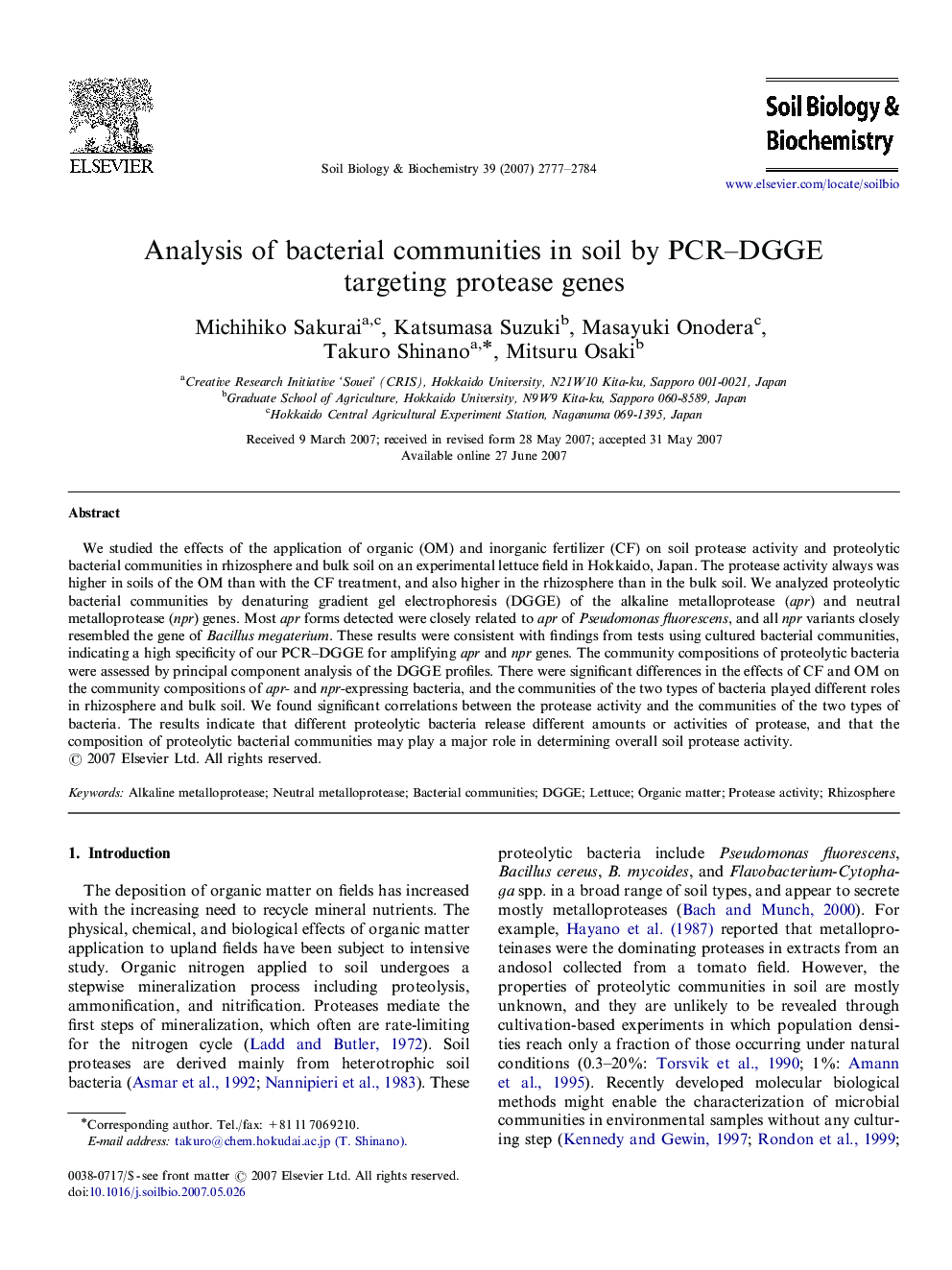| Article ID | Journal | Published Year | Pages | File Type |
|---|---|---|---|---|
| 2027026 | Soil Biology and Biochemistry | 2007 | 8 Pages |
We studied the effects of the application of organic (OM) and inorganic fertilizer (CF) on soil protease activity and proteolytic bacterial communities in rhizosphere and bulk soil on an experimental lettuce field in Hokkaido, Japan. The protease activity always was higher in soils of the OM than with the CF treatment, and also higher in the rhizosphere than in the bulk soil. We analyzed proteolytic bacterial communities by denaturing gradient gel electrophoresis (DGGE) of the alkaline metalloprotease (apr) and neutral metalloprotease (npr) genes. Most apr forms detected were closely related to apr of Pseudomonas fluorescens, and all npr variants closely resembled the gene of Bacillus megaterium. These results were consistent with findings from tests using cultured bacterial communities, indicating a high specificity of our PCR–DGGE for amplifying apr and npr genes. The community compositions of proteolytic bacteria were assessed by principal component analysis of the DGGE profiles. There were significant differences in the effects of CF and OM on the community compositions of apr- and npr-expressing bacteria, and the communities of the two types of bacteria played different roles in rhizosphere and bulk soil. We found significant correlations between the protease activity and the communities of the two types of bacteria. The results indicate that different proteolytic bacteria release different amounts or activities of protease, and that the composition of proteolytic bacterial communities may play a major role in determining overall soil protease activity.
